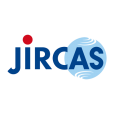Pick Up
12.New Coronavirus Pandemic ―Challenges Facing African Agriculture: A case of Rwanda

April 7, 2020 marks the 26th year since the genocide which is claimed to have killed more than 500,000 people in about 100 days in Rwanda, a landlocked country in Africa. During this time, investment in the tourism industry, ICT and urban infrastructure has been remarkable, making Rwanda the success story for post-conflict reconstruction. In the medical field, Rwanda is often praised as a model to follow in Africa, with the universal health coverage of nearly 90% of its 13 million population (WHO Africa). It is also known for starting up a venture to carry medical products including blood for transfusion by drone for the first time in Africa (BBC World Service). Even when Ebola outbreak occurred in 2019 in its neighboring country, the Democratic Republic of the Congo (DRC), Rwanda has succeeded in mitigating the epidemic in the country by controlling borders and strengthening the sanitation system (WHO).
Regarding the new coronavirus (COVID-19), since the first infected person was confirmed in the mid-March 2020, 105 cases of infection have been reported as of April 6 (Worldometer). Taking advantage of the experience of controlling Ebola infection, the Rwandan government once again quickly strengthened the check system and started a two-week lockdown on March 21at the onset of the outbreak, which was extended until April 19 (The New Times, April 6, 2020). Although the borders were closed, shops and medical institutions handling goods, transportation, groceries and other necessities continued to operate, and private and public offices were encouraged to carry out operations using ICT tools (The New Times, April 2, 2020). However, because it is a landlocked country, border closures and movement restrictions have come with costs. In mid-March, in response to rising food prices, the government introduced fixed prices on food products and restrictions on the purchase amount per person, and announced on Twitter that penalties would be imposed on violating traders (Atlantic Council; The New Times, April 2, 2020).
In Rwanda, agriculture still plays a key role in the economy, especially in the northwestern region which consists of steep and rolling hills, being famous for a rare mountain gorilla habitat, and makes Rwanda known as the country of a “Thousand Hills”. The region is especially endowed with favorite climatic conditions for agriculture with a warm and humid climate at an altitude of 1700 to 2300 m. While fertile soils have supported small-scale agriculture under high population densities, bananas, sweet potatoes and potatoes are cultivated as staple food crops, and beans, vegetables and fruits are cultivated as protein and vitamin sources. On the other hand, the population density in Rwanda to date is 525 per km2, which is far higher than that in Japan with 347 per km2 (Worldometer). Under excessive population pressure, agricultural plots are being highly fragmented due to successive sub-division through inheritance. Farmers there need to adopt sustainable agricultural intensification technologies that maximize the benefits obtained from various agricultural crops while minimizing costs to the environment (Iiyama et al. 2018).
Rural people in Rwanda also face nutritional challenges. Ochanomizu University and JIRCAS conducted a small survey to observe the daily meals of four households in the northwestern rural area of Rwanda, and found that poor households subsisted on one or two meals a day skipping breakfast or lunch. It was also found that the food was monotonous consisting of porridge and beans. While potatoes were the source of protein and iron, important nutrients such as vitamin A were lacking, and it became clear that green and yellow vegetables should be added to the menu (Sudo et al. 2020).
References
Atlantic Council. Rwanda’s successes and challenges in response to COVID-19. AfricaSource by Neil Edwards. March 24, 2020. Accessed on April 7, 2020
BBC World Service. Drones in Africa: How they could become lifesavers Accessed on April 7, 2020.
Tanno Y, Sudo N, … Iiyama M. (2020) Recommended modification of porridge and mixture to improve nutrient intake in the rural area of northern Rwanda. Afr. J. Food Agric. Nutr. Dev. 20(2): 15637-15659. DOI: 10.18697/ajfand.90.19285
Iiyama M, et al. (2018): Addressing the paradox – the divergence between smallholders’ preference and actual adoption of agricultural innovations, International Journal of Agricultural Sustainability, 16:6, 472-485,DOI:10.1080/14735903.2018.1539384
The New Times. COVID-19: Rwanda extends lockdown by 15 days. April 2, 2020. Accessed on April 7, 2020.
The New Times. Rwanda confirms one more COVID-19 case. April 6, 2020. Accessed on April 7, 2020.
WHO. WHO applauds Rwanda’s Ebola preparedness efforts. July 24, 2019.
WHO Africa. Universal Health Coverage in Rwanda Accessed on April 7, 2020.
WHO Africa. Rwanda: the beacon of Universal Health Coverage in Africa. Accessed on April 7, 2020.
worldometer. Coronavirus. Accessed on April 7, 2020.
外務省「ルワンダ共和国」https://www.mofa.go.jp/mofaj/area/rwanda/index.html Accessed on April 7, 2020.
Contributor: IIYAMA Miyuki (Research Strategy Office)
